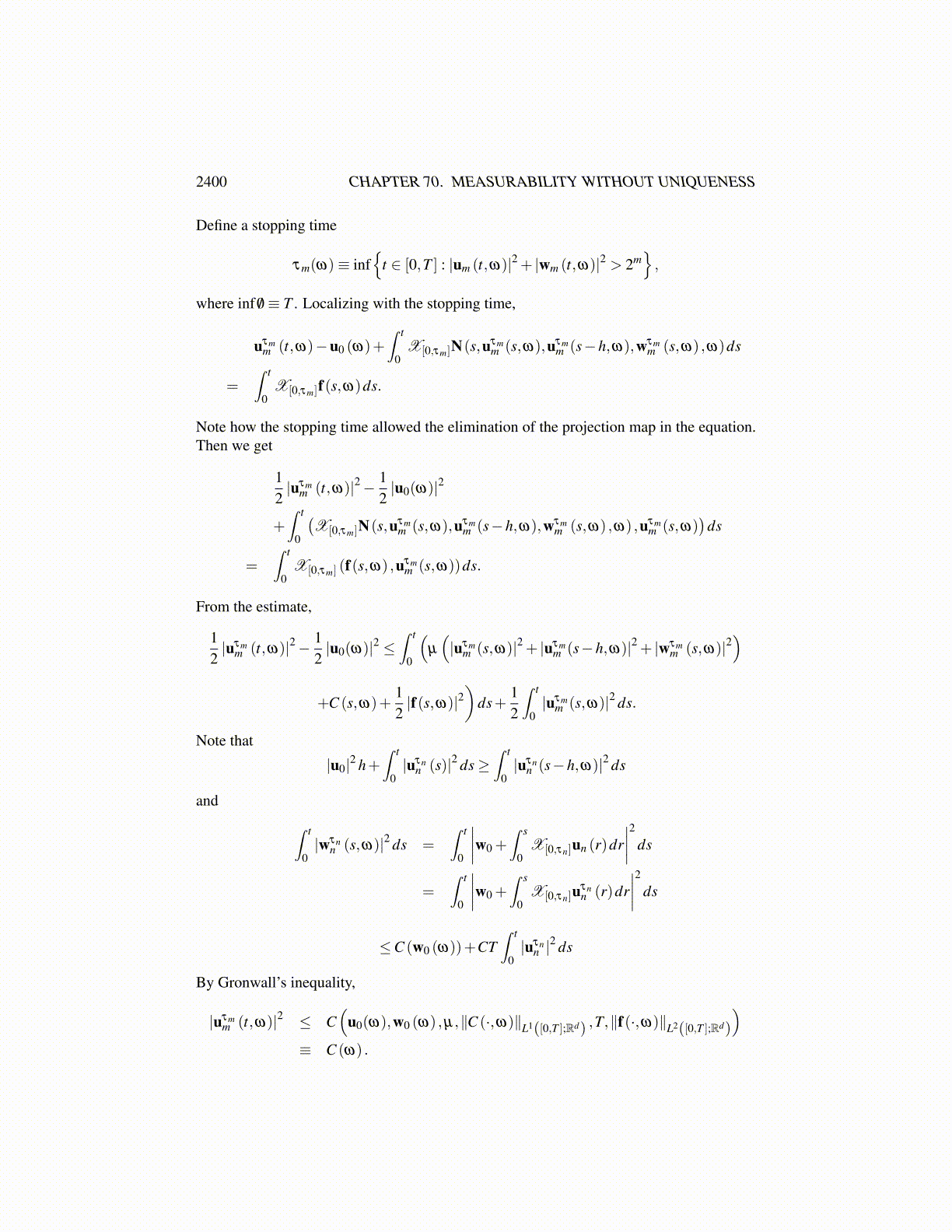
2400 CHAPTER 70. MEASURABILITY WITHOUT UNIQUENESS
+∫ t
s|f(r,ω)|dr ≤C (ω, f) |t− s|1/2 .
Therefore, by the Ascoli−Arzelà theorem, for each ω, there exists a subsequence ñ(ω)depending on ω and a function ũ(t,ω) such that
uñ(ω) (t,ω)→ ũ(t,ω) uniformly in C([0,T ] ;Rd
).
This verifies the assumptions of Theorem 70.2.8.It follows that there exists ū product measurable and a subsequence
{un(ω)
}for each
ω such thatlim
n(ω)→∞
un(ω) (·,ω) = ū(·,ω) weakly in L2([0,T ] ;Rd
)and that t → ū(t,ω) is continuous. (Note that weak continuity is the same as continuityin Rd .) The same argument given above applied to the un(ω) for a fixed ω yields a furthersubsequence, denoted as
{un̄(ω) (·,ω)
}which converges uniformly to a function u(·,ω) on
[0,T ]. So ū(t,ω) = u(t,ω) in L2([0,T ] ;Rd
). Since both of these functions are continuous
in t, they must be equal for all t. Hence, (t,ω)→ u(t,ω) is product measurable. Pass-ing to the limit in the equation solved by
{un̄(ω) (·,ω)
}using the dominated convergence
theorem, we obtain
u(t,ω)−u0 (ω)+∫ t
0N(s,u(s,ω),u(s−h,ω) ,w(s,ω) ,ω)ds =
∫ t
0f(s,ω)ds.
Thus t→ u(t,ω) is a product measurable solution to the integral equation.This lemma gives the existence of the approximate solutions in the following theorem
in which the assumption that the integrand is bounded is replaced with an estimate. Thefollowing elementary consideration will be used whenever convenient. Note that it holdsfor all ω .
Remark 70.3.2 When w(t)≡ w0 (ω)+∫ t
0 u(s,ω)ds,
v(t) ={
u(t−h) if t ≥ hu0 if t < h
and when the estimate
(N(t,u,v,w,ω) ,u)≥−C (t,ω)−µ
(|u|2 + |v|2 + |w|2
)holds, it follows that∫ t
0(N(t,u,v,w,ω) ,u)ds≥−C
(C (ω)+
∫ t
0|u|2 ds
)for some constant C depending on the initial data but not on u.
To see this, ∫ t
0|u(s−h)|2 ds =
∫ h
0|u0|2 ds+
∫ t
h|u(s−h)|2 ds